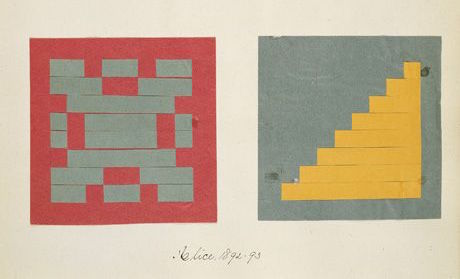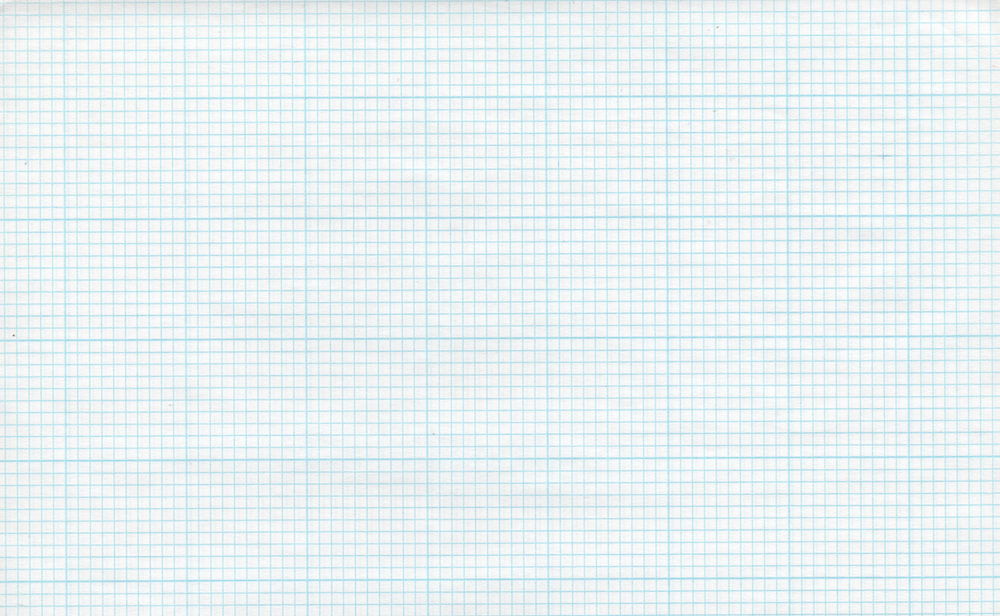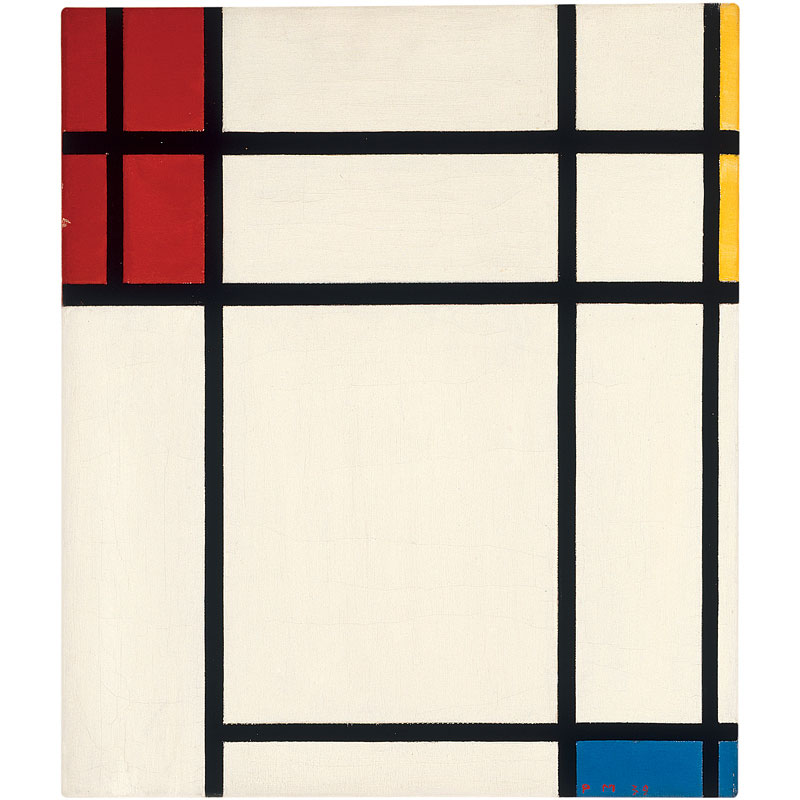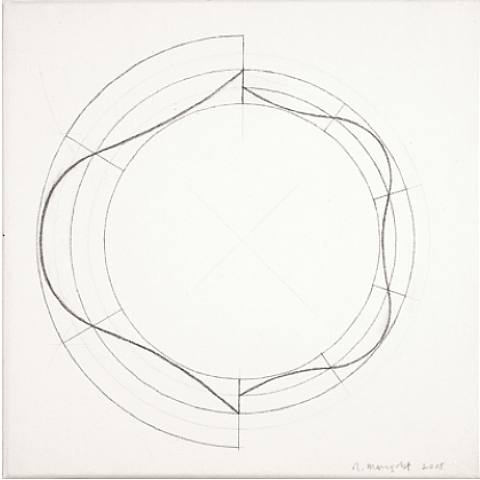| .. | ||
| batman.frag | ||
| circle-making.frag | ||
| circle.frag | ||
| circle.jpg | ||
| compass.jpg | ||
| cross.frag | ||
| distance-field.jpg | ||
| froebel.jpg | ||
| grid_paper.jpg | ||
| hypotenuse.png | ||
| index.html | ||
| line.frag | ||
| mangold.jpg | ||
| mondrian.jpg | ||
| polar.frag | ||
| README.md | ||
| rect-01.jpg | ||
| rect-02.jpg | ||
| rect-df.frag | ||
| rect-making.frag | ||
| rect.frag | ||
| shapes.frag | ||
| triangle-making.frag | ||
| triangle.frag | ||
Shapes
Finally! We have been building skill for this moment! You learn most of the GLSL foundations. You know about types and functions. You practice your shaping equations over and over. Now is time to put all that together. You are up for this challenge. In this chapter we are going to finally learn how to draw simple shapes in a parallel procedural way.
Rectangle
Imagine we have a grid paper, like the one we used on math classes, and the homework is to draw a square. The paper size is 10x10 and the square suppose to be 8x8. What you will do?
You paint everything except the last and first rows and last and first column. Right? But now you are probably asking your self what this have to do with shaders? Each little scare of our grid paper is a thread. Each little scare knows their position, like the coordinates of a chess board. In previous chapters he have mapped x and y to the red and green color channels, we learn that’s our field and space. A narrow two dimensional territory between 0.0 and 1.0. How we can use it to draw a centered square in the middle of our billboard?
- Sketch a peace of code that use
ifstatements over our spacial field.
Well done! This is a great step and accomplish. And speaking about steps, how we can simplify this code that use if statements with step() functions? Take a look to the following code.
#ifdef GL_ES
precision mediump float;
#endif
uniform vec2 u_resolution;
uniform float u_time;
void main(){
vec2 st = gl_FragCoord.xy/u_resolution.xy;
vec3 color = vec3(0.0);
float left = step(0.1,st.x);
float bottom = step(0.1,st.y);
color = vec3( left * bottom );
gl_FragColor = vec4(color,1.0);
}
Here we are using step() to turn everything bellow 0.1 to to 0.0 (black). That will make a line on the left and bottom of the canvas.
If we look close, on the previous code we repeat the structure for each side axis for left and bottom. We can save some lines of code by passing directly two values and treating them in the same way with the same function. Check the following code.
But this rectangle is not centered, is in the top right corner. We need to “take out” equal peaces on both extremes on left-bottom and tight-top to obtain a centered square.
So, to repeat this on the top-right side we can invert the st gradient and repeat the same step() function. That way the vec2(0.0,0.0) will be on the top right corner. This is the digital equivalent of flipping the page.
Interesting right? Because we only know the coordinate position per pixel, our drawing methods are based on it. Drawing shapes is all about flipping and stretching this coordinate system.
Before the going forward, let’s use the simplicity of the rectangle as a training case. Try the following challenges:
-
Can you simplify lines between 16 and 21 in a two single lines? What about one line?
-
Experiment with the same code but using
smoothstep()instead ofstep(). Note that by changing values, you can go from blurred edges to elegant antialiased borders. -
Do another implementation that use
floor(). -
How you can draw rectangles of different sizes instead of just squares.
-
Choose the implementation you like the most and make a function of it that you can reuse in the future. Leave it flexible and efficient.
-
Make another function that just draw the outline of a rectangle.
-
How do you think we can move and place different rectangles in a same billboard? If you figurate out how, show of your skills making a composition of rectangles and colors that resemble a Piet Mondrian painting.
Circles
In the same way is easy to draw squares on grid paper, is relatively easy to draw rectangles with cartesians coordinates. But circles requires another approach. Some how we need to treat the spacial coordinates in a way that at the end we can draw circles with just a step() functions.
Going back to the grid paper and the math class, we were hable to draw perfect circles by opening a compass by the desired radius, pressing one of the endings on the desired center of the circles and spinning the other end around.
If we do this over a grid paper, thinking that each square on the grid is a pixel, we can draw a circle by asking each pixel (or thread) if they are inside the area of the circle. Right? We can know that area by computing the distance to the center of the center of the circle.
There are several ways to calculate that. The easiest one is just using the distance() functions, which internally computes the length() of the difference between two points (in our case the fragment coordinate and the center of the canvas). The length() function is nothing but a shortcut of the hypotenuse equation that use square root (sqrt()) internally.
So far I just describe three functions (distance(), length() and sqrt()) you can use. The following code contain this three functions and how to get the exactly same result with each one. Note that on it we are mapping the distance to the center of the billboard to the color brightness of the pixel.
- Comment and uncomment lines to try the different ways to get the same result.
The resultan mapping values between distance and brightness can be a really helpful technique. Note that, the closer the pixel is to the center the lower (darker) values it have. Values don't get to high because from the center ( vec2(0.5, 0.5) ) the maximum distance barely goes over 0.5. Contemplate this map and think:
-
What you can infer from it?
-
How we can use this to draw a circle?
-
Modify the above code in order to contain the circular gradient inside the canvas.
Distance field
Imagine the above example as an inverse altitude map. The darker the taller. The gradient show us the pattern of something shape similar to a cone view from above. Imagine your self on the top of that cone, under your foot you hold the tip of a ruled tape while the rest of it goes than the hill. Because you are in the center of the canvas, the ruler will mark "0.5" in the extreme. This will be constant in all your directions. Buy choosing where to cut horizontally the top of cone you will get a bigger or smaller circular surface.
Interesting right? We can combine this re-interpretation of space to make shapes based on the distance to 0. This technique is known as “distant field” and is use in different ways from font outlines to 3D graphics.
Try the following excursuses:
-
Use
set()to turn everything above 0.5 to white and everything bellow to 0.0 -
Inverse the colors of the background and foreground.
-
Using
smoothstep()experiment trying different values to get nice antialiased borders on your circle. -
Once you are happy with an implementation make a function of it that you can reuse in the future.
-
Use your function to mask a color with it.
-
Can you animate your circle to grow and shrink simulating a beating heart?
-
What about moving this circle? Can you move an place different circles in a single billboard?
-
What happen if you combine distances fields together using different functions and operations.
pct = distance(st,vec2(0.4)) + distance(st,vec2(0.6));
pct = distance(st,vec2(0.4)) * distance(st,vec2(0.6));
pct = min(distance(st,vec2(0.4)),distance(st,vec2(0.6)));
pct = max(distance(st,vec2(0.4)),distance(st,vec2(0.6)));
pct = pow(distance(st,vec2(0.4)),distance(st,vec2(0.6)));
- Make three compositions using this technique. If they are animated better!
For your tool box
In terms of computational power sqrt() function (and all the once that depend on it) can be expensive. Here is another way to create a circular distance field by using dot() product.
Polar shapes
In the chapter about color we map the cartesian coordinates to polar coordinates by calculating the radius and angles of each pixel with the following formula:
vec2 pos = vec2(0.5)-st;
float r = length(pos)*2.0;
float a = atan(pos.y,pos.x);
In the previous examples we have use the radius (from the center) to draw a circles. Now, if we compute the angle from the pixel (threat) to the center, we can modulate the radius to achieve different shapes. How? Yes! Shaping functions!
Below you will find the same functions in the cartesian graph and in a polar coordinates shader example (between lines 21 and 26). Uncomment one by one the functions paying attention the relationship between one coordinate system and the other
Try to:
- Animate this shapes
- Combine different shaping functions to cut holes on the shape to make better flowers, snowflakes and gears.
- Use the
plot()function we were using on the Shaping Functions Chapter to draw just the contour.
Combining powers
As we saw at the beginning polar coordinates are very useful and particularly easy to map into distance field. As we saw
in the circle example you just need to compute the radius using a length() function. Also we already learn how to modulate that radius according to the angle using the atan() function.
We can combine both to construct shapes according to how many sides it have. Check the following code from Andrew Baldwin one of his blog post
Congratulations! You have made it through the rough part! Take a break and let this concepts sediment, drawing simple shapes on Processing is really easy but not here. In shader-land everything the way to thing on shapes is twisted and can be exhausting to adapt to this new paradigm of coding.
Now that you know how to draw shapes I'm sure new ideas will pop to your mind. In the following chapter we will learn more about how to move, rotate and scale them moving. This will allow you to compose them!









